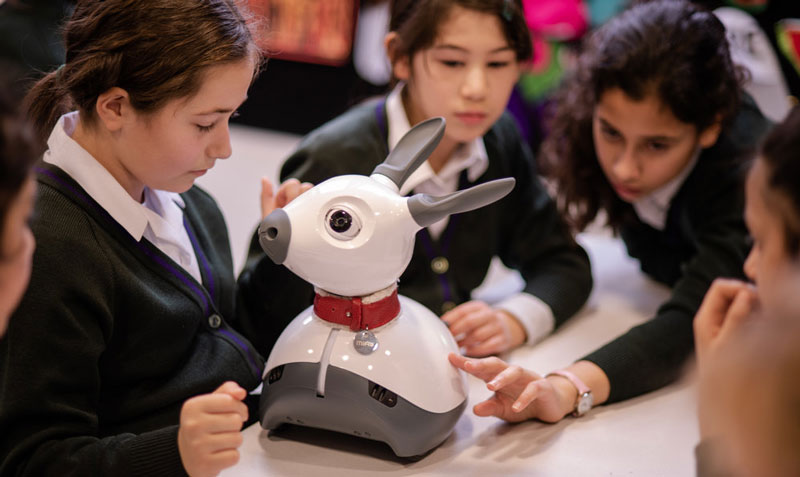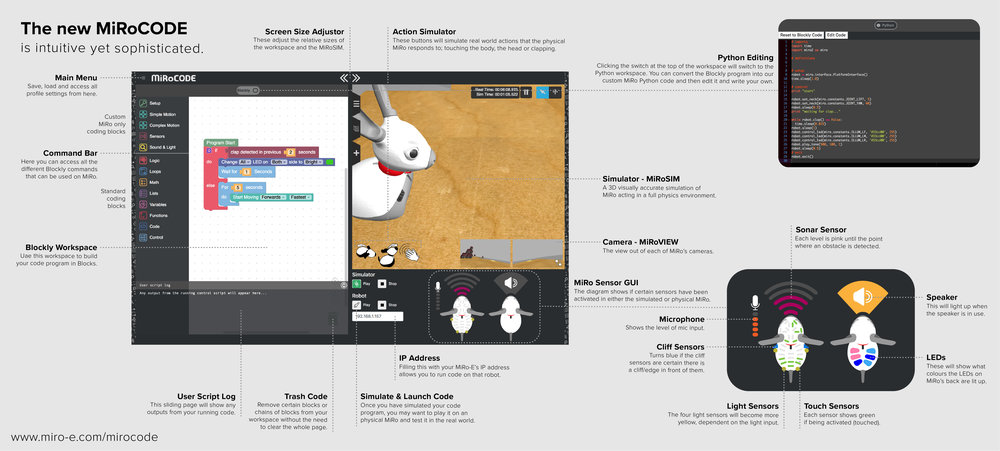Programming Robots To Interact With Humans
In today’s fast-faced and technology-driven environment, robots are not a thing of the future anymore. They are part of our present reality and research in social robotics and their application in human-robot interaction is on the rise. The long-term aim of programming robots for social interaction is to apply them in diverse aspects of life such as health, education, entertainment, quality of life and communication. Multiple educational institutions all across GCC, Dubai, UAE and Middle East are using MiRo, the animal-like robot as an educational tool for STEM subjects. The robot is designed to behave in a natural way and students also get a chance to use the MICROCODE programming environment to create their own unique programs and try them live in a full-physics simulation. However, first, it is vital to comprehend which elements are used to program robots for human interaction.

Developing Artificial Senses
A normal animal is able to successfully detect what goes around in the environment, which is why even robots should be able to do the same in order to blend naturally. Most new-generation robots come equipped with artificial sight, touch and hearing. For sight, engineers fit internal digital cameras that not only receive digital images but also identify them with the help of its program that processes all this data. This allows the robot to identify its visual environment and communicate appropriately whenever required. For hearing, they come equipped with integral microphones that receive analogue data, which is then converted to digital files. It is programmed in such a way that the social robot will not only recognise the human voice but also be able to notice the voice pattern etc. Multiple advanced robots also feature touch-sensitive ‘skin’ that detects weight and is sensitive to pressure. This indeed plays a huge role in human interaction.
Programming The Responses
Now that our robot is equipped with its artificial senses, it now requires programs that allow it to detect behaviour and respond in an appropriate manner. This includes mechanical movement like turning and tilting its head, moving its arms and legs, reaching out to touch its companion and much more. Modern robots also include speech and sound; many social robots are used to play audio tracks, music, and make certain sounds.

Things to keep in mind for a successful human-robot interaction
A lot of factors go into ensuring the interaction between a human and a social robot is seamless and meaningful. Some of these factors include the design and styling of the robot’s body and head, the movement of the social robot (which also includes speed and reflexes), the way the voice sounds and how it interacts with its environment. These factors highly depend on what purpose the social robot is designed to serve. For example, a robot designed for children will feature a soft voice with cute childlike features. Sophisticated programming includes a comprehensive amalgamation of all these elements in a way that they feel comfortable to be around and benefit people. While some robots have a humanized design, robots like MiRo are designed like an animal. These social machines have proved to be tremendously helpful in the education industry as it allows students to learn more about robotics, AI coding skills, technology and much more.
While the global trends throw more light upon the importance of Human-Robot Interaction, it is safe to say that programming robots for human interaction are still a long-term challenge. However, the sharp rise in the availability of social robots has struck a positive chord for this industry.






Recent Comments